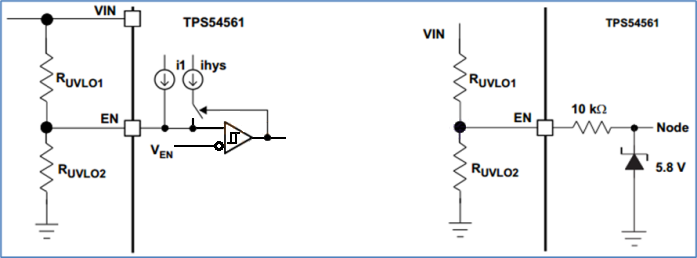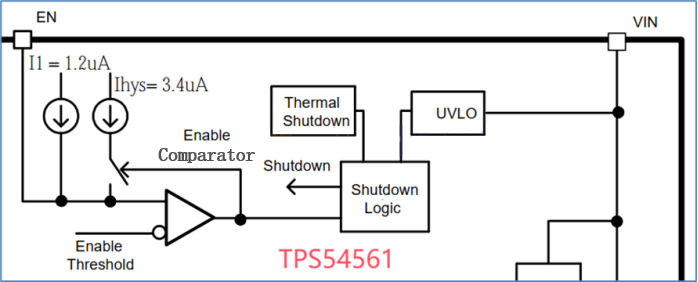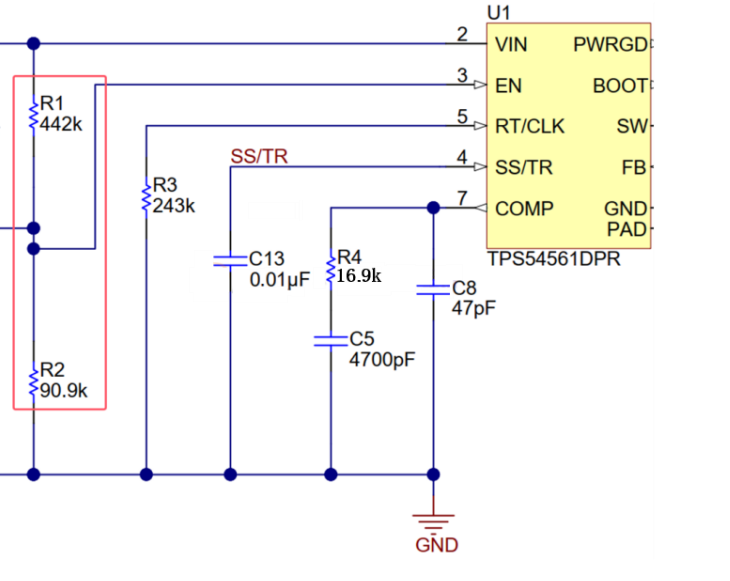Sensors and instruments all have an operating voltage range, and only within this voltage range can the system operate stably and reliably. We know that the high-voltage threshold can be controlled by an overvoltage protection circuit, but how is the low-voltage threshold defined? Power supplies typically use a buck-type (BUCK) + low-dropout (LDO) solution. The minimum operating voltage is established by the buck-type circuit's UVLO (undervoltage lockout) function, acting as a "safety gate." This ensures that the system operates only when the input voltage is above the UVLO voltage, preventing instability in downstream power supplies and potentially causing system outages due to excessively low input voltages.
Undervoltage lockout (UVLO) is a circuit protection mechanism that monitors the system's input voltage. When the input voltage falls below a set threshold, UVLO shuts down the power supply output, preventing system instability, component damage, and even safety hazards caused by insufficient voltage.
UVLO Dual Threshold Design
Start Threshold (V_START): When the input voltage rises to this value, the circuit begins operating (for example, 6.5V).
Shutdown Threshold (V_STOP): When the input voltage drops to this value, the circuit stops operating (for example, 5V). Hysteresis voltage (HYS): This prevents frequent switching caused by voltage fluctuations near the threshold (for example, after starting at 6.5V, the voltage must drop to 5V before shutting down).
Take TI's TPS54561 buck power supply chip as an example. Its UVLO function is implemented through the EN pin. Its internal structure includes two key modules: ① Voltage comparator: This detects the EN pin voltage against an internal threshold (typical value V_ENA = 1.2V). ② Hysteresis current source: This provides a hysteresis current of Ihys = 3.4μA to prevent frequent switching caused by voltage fluctuations.


According to the datasheet, the TPS54561 EN pin includes a pull-up current source I1 = 1.2μA, a hysteresis current source Ihys = 3.4μA, and V_ENA = 1.2V (EN pin threshold). The UVLO threshold is configured using two voltage-divider resistors, as shown in the following formula:

TPS54561 UVLO Configuration Method
Use an external resistor divider network to adjust the UVLO start voltage (V_START) and shutdown voltage (V_STOP):
Start when the input voltage is ≥ 6.5V (add 1-3V steps to the output voltage target of 5V, here 5V + 1.5V = 6.5V).
Stop when the input voltage is ≤ 5V (because the output voltage target is 5V).
Calculation Steps:
Calculate R1/R_UVLO1:
R_UVLO1 = (V_START - V_STOP) / I_HYS = (6.5V - 5V) / 3.4μA ≈ 442kΩ
Calculate R2/R_UVLO2:
R_UVLO2 = (V_ENA * R_UVLO1) / (V_START - V_ENA + I1 * R_UVLO1) ≈ 90.9kΩ
The final result is shown in the figure below:

UVLO acts like a watchdog for the power supply system, taking decisive action when voltage is abnormal, adding a safety lock to your power supply solution!

Xml política de Privacidade blog Mapa do site
Direitos autorais
@ Micro-Magic Inc. Todos os direitos reservados.
 SUPORTADO POR REDE
SUPORTADO POR REDE
